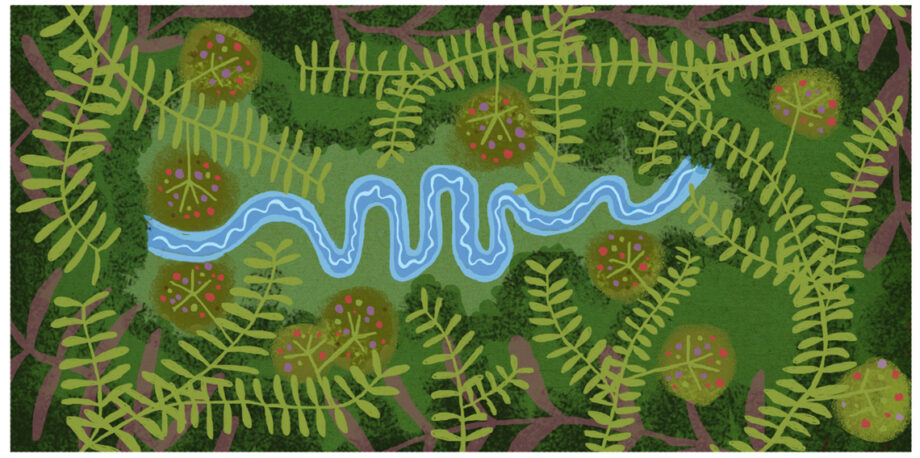February 11, 2015 — In a recent essay in this magazine, Daniel Simberloff and co-authors liken the novel ecosystem concept to “a Trojan horse for conservation.” Although I understand their concern, I find their outright condemnation of the idea shortsighted. As one who has published with authors on both sides of this “fence,” I feel compelled to join this discussion.
My field of research is biological invasions — in particular, plant invasions. A large part of my career has been spent trying to understand why some introduced plants become invasive, and how and why some of them cause huge damage in the ecosystems they invade. A substantial part of my work has also sought to guide restoration of ecosystems trashed by these invaders. I became interested in the novel ecosystems idea especially through my work on restoration of riparian ecosystems in South Africa that have been severely degraded by woody invasive plants. The scale of this problem is so huge, and the drivers of the damage are so complex, that restoring many of these degraded systems to anything like their original state is, I would argue, practically impossible. Key factors such as the flow regimes of rivers have been so fundamentally changed that the plant communities that existed in these systems prior to human-mediated degradation (assuming we knew what they were; in many cases we don’t) could not survive in the current ecosystems. Experience has shown that even hugely expensive science-informed efforts to control invasive species have not succeeded in changing the trajectory of degradation and in many cases have made the problem much worse (e.g., by introducing and facilitating the proliferation of new invasive species and by destabilizing riverbanks, leading to massive erosion and damage to infrastructure).
My recommendation has been to engage all stakeholders to decide which ecosystems services are most desirable and practical, and to direct management toward clearly formulated goals (including biodiversity conservation) to optimize these services.
The novel ecosystems construct (as in the initial 2006 formulation, and increasingly so in later formulations) is to me a sensible and pragmatic foundation upon which to define “rules” for setting about managing these degraded systems — to guide management to maximize the provision of ecosystem services while not necessarily (for practical reasons) removing all invasive species. One system I have worked on is the Eerste River, which runs through the town of Stellenbosch in South Africa’s Western Cape province where I live and work. Several studies have described the vegetation communities along this river and have detailed the multiple, interacting drivers of degradation. Flow regimes and many other features of this river have changed so radically over the past few decades that the natural vegetation that existed prior to invasion of nonnative trees would not survive here now. In this human-dominated system I have advocated a novel ecosystem approach to management. My recommendation has been to engage all stakeholders to decide which ecosystems services are most desirable and practical, and to direct management toward clearly formulated goals (including biodiversity conservation) to optimize these services.
One of the main arguments of those who oppose the novel ecosystem concept is the lack of clarity of what exactly could (or should) be viewed as “novel” or “hybrid” according to this construct. It is true that the objective definition of thresholds in many systems is difficult. But I think the naysayers are being too pessimistic here. My colleague Mirijam Gaertner and I have discussed this issue at length in a book chapter entitled “Plant Invasions as Builders and Shapers of Novel Ecosystems.” We have identified objective thresholds in terms of impacts on ecosystem functioning for several of the world’s most damaging invasive plant species, such as fire tree (Morella faya), gamba grass (Andropogon gayanus) and salt cedar (Tamarix spp). Of course, the mediators of such thresholds, and the practical challenges of recognizing them in the field (especially when multiple drivers of degradation are at play), can and should be debated. We have, however, used such reasoning to propose objective strategies for managing large tracts of land degraded by invasive species in South Africa’s Cape Floristic Region.
The magnitude of human-driven degradation of ecosystems is so huge that pragmatic approaches such as the novel ecosystems framework simply must be given careful consideration.
Work along a heavily invaded river in the Western Cape has identified thresholds of invasion in terms of invasive tree density and other metrics; if these thresholds are breached, major degradation and impacts eventuate. Experience has shown that removal of all invasive trees (very dense stands of large Eucalyptus camaldulensis trees) is prohibitively expensive and very damaging to the physical features of the river. Thinning the invasive trees reduces impacts on biodiversity and ecosystem services (e.g., increases water quantity and quality and restores opportunities for recreation). In some cases, such gradual “restoration” seems to pave the way for achieving ecosystems that resembled those that existed there a century ago. In many cases, however, these ecosystems are sure to be dominated by eucalypts many decades from now, but we must do what we can to make these systems as useful as possible. It is in cases like this that I really believe that the pillars of the novel ecosystems idea are very useful.
Do such notions and activities provide “a license to trash nature if they provide ecosystem services,” as Simberloff et al. contend? Definitely not in the systems and contexts in which I work. Priority is clearly given to preventing invasions and to eradicating invasive species that can be got rid of. Richard Hobbs and co-authors (including me) have argued that adopting aspects of the “novel ecosystems” approach need not be a slippery slope in our commitment to conservation and restoration.
In my view, the magnitude of human-driven degradation of ecosystems is so huge that pragmatic approaches such as the novel ecosystems framework simply must be given careful consideration. In a recent review of the challenges involved in managing invasive trees, my colleague Brian W. van Wilgen and I proposed a “toolbox of options.” “Management of the invaded habitat as a novel ecosystem” is one of the 13 management options put forward. This would usually be the last resort — but, unfortunately, in many cases this is the only practical option for specific habitats. That is not to say that efforts to prevent new invasions, to eradicate invaders where this is still feasible, or to contain or reduce the density of the invaders using various methods should not be applied as fundamental parts of overall strategies.
So, when discussing the novel ecosystem notion, let’s not throw the baby out with the bathwater. ![]()
Editor’s note: The views expressed here are those of the author and not necessarily of Ensia. We present them to further discussion around important topics. We encourage you to respond with a comment below, following our commenting guidelines, which can be found here. In addition, you might consider submitting a Voices piece of your own. See Ensia’s “Contact” page for submission guidelines.
Ensia shares solutions-focused stories free of charge through our online magazine and partner media. That means audiences around the world have ready access to stories that can — and do — help them shape a better future. If you value our work, please show your support today.
Yes, I'll support Ensia!

Can you name one species on the Australian continent that had an invasie one as the sole reason for its extinction? I have found a lot of assumptions made by scientists, but science hinges on facts not assumptions.
I cannot and will never claim global warming is unnatural for you cannot prove humans and what they do are somehow not natural (does this actually have any scientific meaning?). You can prove that the warming significantly influenced by humans, hence it is anthropogenic. Whether that is good or bad can never be proven.
In environmental sciences people seem to have crossed the line between politics (personal opinions) and science (fact finding without opinions). My impression is that this is all turning into an ideology, where the same people (like mentioned above) actually want to set rules for society what should and should not be in some place based on its origin. "Nativity" seems incorrect, the foxes in Australia are very native, but their origin is Eurasia.
Society should decide this based on facts brought up by those who studied in this field. After reading a couple of books for scholars I also wonder how a student can remain unbiased towards novel ecosystems and their inhabitants. Very strange way of doing science to my mind.